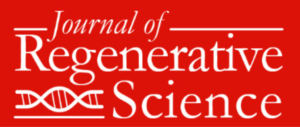A Commentary on “Extracorporeal Shock Wave Therapy with Imaging Examination for Early Osteonecrosis of the Femoral Head: A Systematic Review”
Bibliographic Analysis | Vol 5 | Issue 1 | January-June 2025 | page: 03-04 | Song Dehui, Sun Wei, Fuqiang Gao
DOI: https://doi.org/10.13107/jrs.2025.v05.i01.155
Open Access License: CC BY-NC 4.0
Copyright Statement: Copyright © 2025; The Author(s).
Submitted Date: 08 Apr 2025, Review Date: 24 May 2025, Accepted Date: May 2025 & Published: 30 Jun 2025
Author: Song Dehui [1], Sun Wei [2, 3], Fuqiang Gao [1]
[1] Department of Orthopaedic Surgery, Center for Osteonecrosis and Joint Preserving and Reconstruction, China-Japan Friendship Hospital, Beijing, China,
[2] Department of Orthopedics, Beijing United Family Hospital, Chaoyang, Beijing, China,
[3] Department of Orthopaedic Surgery, Perelman School of Medicine, University of Pennsylvania, Philadelphia, Pennsylvania, USA.
Address of Correspondence
Dr. Fuqiang Gao.
Department of Orthopaedic Surgery, Center for Osteonecrosis and Joint Preserving and Reconstruction, China-Japan Friendship Hospital, Beijing, China.
E-mail: gaofuqiang@bjmu.edu.cn
Dear Editor,
We have carefully read the systematic review article by Tan et al. [1] published in the International Journal of Surgery. By combining imaging and clinical findings as an important indicator, they studied the clinical effect and images of extracorporeal shock wave therapy (ESWT) in early stage osteonecrosis of the femoral head (ONFH), and suggested that ESWT can improve the symptom of bone marrow edema and was expected to be used as a promising treatment to enhance hip function and reduce pain in the early ONFH. However, we have a few considerations we would like to discuss regarding specific aspects of the study.
First, this systematic review included the randomized controlled trials (RCTs) and case series studies. RCT is widely considered the “gold standard” for evaluating the causal effect of the intervention, and case series, which provide some observational evidence for practical clinical applications, have a low level of evidence and a high risk of selection bias due to insufficient patient selection criteria. The combination of two types of studies for analysis may introduce bias and affect the efficacy of ESWT. In addition, we found that one of the studies involved fewer than 20 cases. It may result in insufficient statistical power, increasing the risk of false-positive or false-negative results due to random variability. Second, when comparing the three main indicators: Damage size (lesion size), change in Association Research Circulation Osseous stage, and marrow edema grade after ESWT, the results mainly relied on only one single-center RCT by Wang et al. [2] and significant differences existed in the cont ol group interventions across several included studies. Some studies used medical treatment as a control, whereas others conducted surgical intervention. This variability makes it challenging to isolate the potential contributions of other treatments, significantly limiting the precise assessment of the relative effect of ESWT.
Finally, throughout the study, the authors did not clearly differentiate between ONFH and bone marrow edema syndrome (BMES). Instead, they examined bone marrow edema as an early symptom of avascular necrosis (AVN), which may obscure the distinct nature of these conditions and misrepresent the effects of ESWT. ONFH is a common condition characterized by hypoxia and necrosis of bone tissue caused by disrupted local blood supply. This is a worsening and irreversible process, leading to irreparable bone damage and structural deformity. Surgical interventions, such as total hip replacement, are often required in severe cases. In contrast, BMES is a reversible condition characterized by elevated intraosseous pressure and a localized inflammatory response causing fluid accumulation in the bone marrow.
Its primary symptom is acute localized pain, but it often resolves spontaneously. Conservative treatments, including non-steroidal antiinflammatory drugs, physical therapy, and weight-bearing reduction, are typically effective. ESWT has demonstrated efficacy in promoting tissue regeneration, enhancing angiogenesis, and alleviating local pain, particularly in BMES.
However, the efficacy of ESWT in treating AVN of the femoral head is relatively limited. Thus, treating bone marrow edema as an early manifestation of femoral head necrosis may overestimate the overall efficacy of ESWT, potentially misrepresenting its therapeutic impact. Simple bone marrow edema typically presents as a diffuse high-signal response in the femoral head on magnetic resonance imaging (MRI). In contrast, bone marrow edema secondary to ONFH appears as a low or absent signal on MRI, reflecting necrotic and inactive bone tissue. In the discussion, the citation of Figs. 8 and 9 failed to clearly differentiate whether the imaging sources represented BMES alone or bone marrow edema secondary to AVN. When citing relevant imaging results, special attention should be paid to the differences in imaging between the two types of BMES. Such ambiguous referencing may mislead readers into assuming that ESWT has comparable therapeutic effects across all types of bone marrow edema. Nevertheless, we commend the authors for their contribution to the study, and we believe that with further differentiation between BMES and ONFH the related research will be more precise and in-depth.
References:
1. Tan H, Tang P, Chai H, Ma W, Cao Y, Lin B, et al. Extracorporeal shock wave therapy with imaging examination for early osteonecrosis of the femoral head: A systematic review. Int J Surg 2024;111:1144-53.
2. Wang CJ, Huang CC, Wang JW, Wong T, Yang YJ. Longterm results of extracorporeal shockwave therapy and core decompression in osteonecrosis of the femoral head with eightto nine-year follow-up. Biomed J 2012;35:481-5.

| How to Cite this article: Dehui S, Wei S, Gao F | A Commentary on “Extracorporeal Shock Wave Therapy with Imaging Examination for Early Osteonecrosis of the Femoral Head: A Systematic Review”. | Journal of Regenerative Science | Jan-Jun 2025; 5(1): 03-04. |

Leave a Reply
Want to join the discussion?Feel free to contribute!